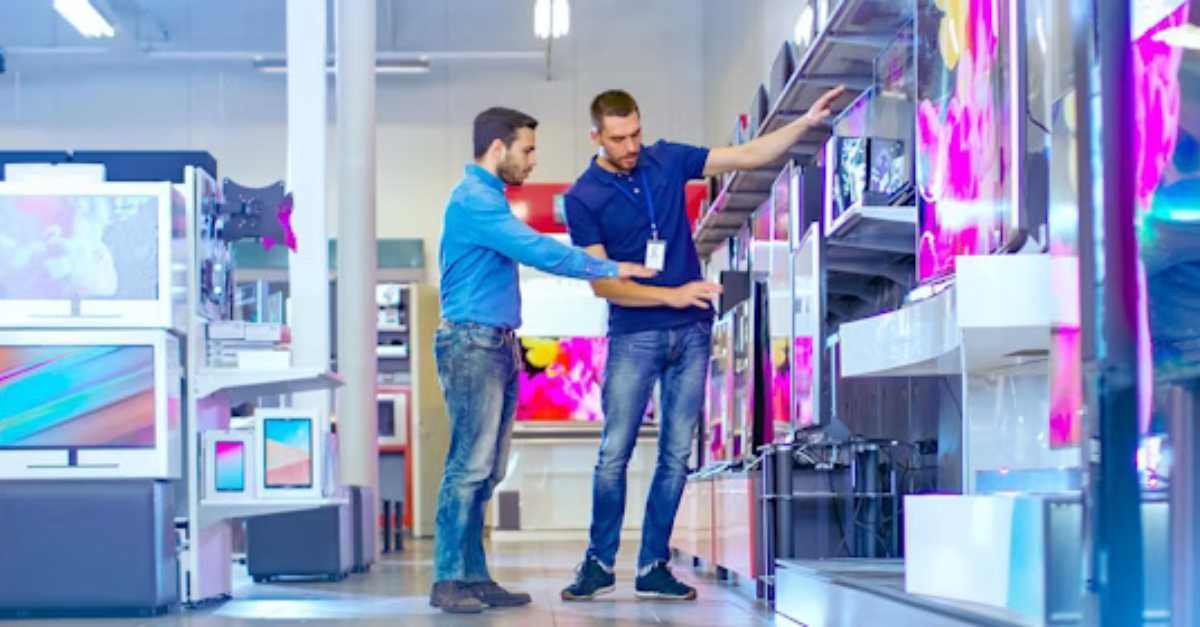
Retail Trends | 5 Ways Mobile Apps can Improve Brick & Mortar Stores
Discover how to leverage a mobile app can improve a customer’s experience in a brick and mortar business.
Solutions
Workplace Management Solutions
Real Estate Management Solutions
Maintenance Management Solutions
Energy Management Solutions
Engineering Document Management Solutions
Asset Management Solutions
Automate campus scheduling for classes, meetings, and exams with our EMS software.
Plan and manage conferences effortlessly with EMS software to impress guests and streamline operations.
Boost workplace flexibility and maximize space use with seamless desk and room booking.
Organize workplace or campus events smoothly, creating memorable experiences.
Optimize workspace, manage allocations efficiently, and reduce costs with our space management solutions.
Deliver projects on time and within budget by improving communication, collaboration, and efficiency with our software.
Streamline lease accounting for ASC 842, IFRS, and GASB compliance.
Manage leases efficiently by tracking key dates, analyzing costs, and ensuring compliance.
Centralize data and analytics for better insights, faster negotiations, and revenue growth.
Centralize facility and asset maintenance, automate work orders, and ensure compliance with our CMMS software.
Extend asset life, reduce downtime, and prevent costly repairs with data-driven monitoring.
Prevent equipment failures and extend asset life by detecting and addressing issues early.
Make sustainable, cost-efficient energy decisions by monitoring and optimizing power consumption.
Remotely monitor and control equipment with real-time data to predict issues, boost efficiency, and reduce downtime.
Easily share and collaborate on documents, creating a single source of truth for engineers and contractors.
Manage and analyze assets across their lifecycle to schedule maintenance, reduce downtime, and extend lifespan.
Improve visibility, automate work orders, and ensure compliance for efficient facility and asset management.
Resources
Browse our full library of resources all in one place, including webinars, whitepapers, podcast episodes, and more.
Support
Looking for access to technical support, best practices, helpful videos, or training tools? You’ve come to the right place.
About Accruent
Get the latest information on Accruent, our solutions, events, and the company at large.

The retail apocalypse has closed thousands of stores, but the tide is turning. See how you can strengthen your physical locations through great customer experiences, combined with technology for increased efficiency.
By Michael Pleasant, Solutions Consultant, Accruent
The retail apocalypse — the precipitous drop in brick-and-mortar stores over the past decade ― has primarily been driven by the rise of e-commerce. The decline of physical stores in the U.S. is painfully evident:
The pandemic exacerbated existing trends, so much so that in its early months, analysts predicted that 100,000 stores in the U.S. would soon close their doors. The thinking was that the pandemic would result in shoppers permanently altering their shopping habits and accelerate a dependence on online over in-person shopping.
But today there is hope for brick-and mortar retailers. As stores shift to become the centerpiece of customer interaction and evolve in everything ranging from providing unique atmospheres to fulfilling online orders, companies that are adapting their store formats are positioning themselves to not only weather the storm ― but to thrive.
Despite many of the benefits of e-commerce, physical stores excel in several important areas related to customer satisfaction. The key is creating great experiences that drive customer loyalty.
Online shopping has its conveniences, such as the ability to comparison shop and locate items that aren’t readily available at the local store, but there are some conveniences it simply can’t replace. Need to grab a bottle of wine on the way to dinner or snacks on the way home from work? In-person shopping means your customer walks out with the product they purchased and can begin using it right away.
Touch and feel can be integral to the purchasing process. It’s why we want to sniff perfumes, try on tailored fashions, or test-drive cars before we buy them. It’s also how customers can determine the quality of a product. Online shopping will never replace the desire to physically experience some items before purchasing them.
In a brick-and-mortar store, a knowledgeable salesperson can guide a customer through the entire buying process, making for a great shopping experience. They not only greet customers, help them find products, and answer questions, but the guidance and validation they offer can help your customers feel that they are making the right purchase decision.
One of the trends that emerged after pandemic restrictions were lifted was that the percentage of consumers who said they were willing to pay more for local products and services jumped from 57% to 64%. Your customers feel strong connections with your brick-and-mortar locations, especially when they see you as part of their community.
Given the benefits that physical locations offer customers, retailers are looking for ways to make their brick-and-mortar stores as efficient as possible so they can focus on customer experience. This is where technology can help. To shape, drive, manage, and control retail physical assets, businesses use technology such as:
There are encouraging signs that physical stores are on the upswing, as store openings top store closures for the first time in nearly 7 years.
Retail stores that focus their efforts on some of the key areas above will be in a strong position to remain open and win the retail apocalypse war. This means not only marketing the benefits that drive customers to physical locations, but deploying the technology needed to keep those destinations modern and efficient. Learn about Accruent’s technology for retailers.
Discover how to leverage a mobile app can improve a customer’s experience in a brick and mortar business.
The faster you can open a store, the faster you can earn income. Discover how construction project management software can speed up the building ...
Exhaust fans running around the clock. Doors on refrigeration units left open. Avoid these scenarios and cut consumption costs with real-time energy ...
Subscribe to stay up to date with our latest news, resources and best practices.
* To unsubscribe at any time, please use the “Unsubscribe” link included in the footer of our emails.